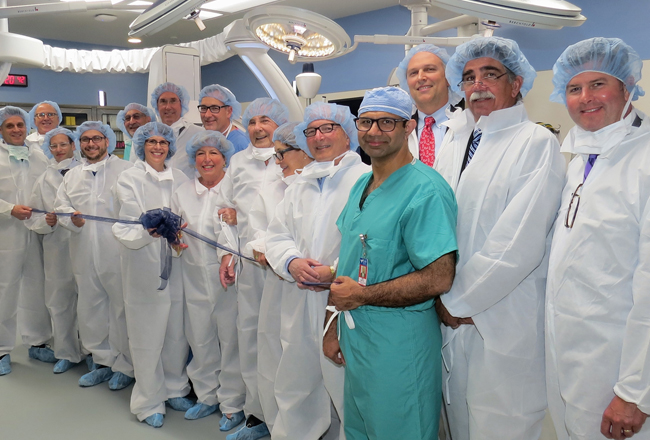Bridgeport Hospital opens hybrid OR

Bridgeport Hospital has officially opened the Elizabeth M. Pfriem Hybrid Operating Room to serve patients in need of aortic aneurysm repairs, aortic valve replacements and other sophisticated heart and vascular procedures.
Designed to enhance patient safety and outcomes, the OR is equipped with the GE Discovery IGS 740 imaging system, which offers flexible positioning and excellent image quality using low-dose X-rays. Construction on the OR began last summer and included design input from several physicians and surgeons.
The $5.7 million project was supported by more than $2 million in philanthropic gifts from John Falconi, Albert Kleban, Emil Meshberg and lead donor and namesake Pfriem, the former newspaper publisher and philanthropist who died earlier this month, among others.
“Betty Pfriem”™s gift to support the hybrid OR was one of her last major gifts,” Bridgeport Hospital Foundation President Steve Jakab said. “The hybrid OR is a fitting tribute to her many years of generosity toward the hospital and community. Not only has she helped enhance patient care, she has set an example for many others about the importance of philanthropy.”
“Hybrid OR technology provides the most sophisticated, detailed visualization of endovascular anatomy,” Chairman of Surgery Nabil Atweh said. “This helps vascular surgeons and interventional cardiologists guide optimal placement of valves and vascular grafts. With the aid of this technology, surgeons have significantly improved the outcomes of minimally invasive procedures.”
“The hybrid OR exemplifies the ongoing evolution of cardiovascular disease treatment toward an increasing reliance on less invasive and minimally invasive approaches,” added Chief of Cardiology Stuart Zarich. “For our patients, this often means a shorter hospital stay and faster recovery. In addition, we can safely treat more higher-risk patients who are not eligible for traditional surgical treatments.”